

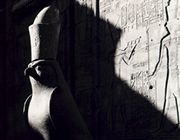
By felucca on the tranquil Nile we explored the sites around Elephantine Island.
The atmospheric Temple of Isis at Philae is unlike any other temple location and a huge contrast to the power and magnificence of Abu Simbel. On the way north Kom Ombo and massive Edfu also lie close to the life-giving Nile.
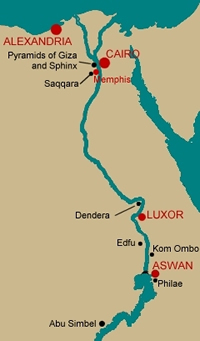
Some of the gods:
Amun: god of Thebes
Atum:creator god of Heliopolis, identified with Re
Hathor: the cow goddess, wife to Horus
Horus: the falcon god, son of Isis and Osiris
Isis: goddess of motherhood and rebirth, wife of Osiris
Mut: primal creator goddess, wife of Amun
Nut: sky goddess, shown with arched body to form heaven
Osiris: god of the dead
Ptah: creator god of Memphis
Re: the great sun god of Heliopolis, often linked with other gods
Re-Herakhte: falcon-headed god, fusion of Re and Horus
Seth: brother and murderer of Osiris
Sobek: crocodile god
The legend of Isis and Osiris tells how, when his brother Seth killed Osiris, dismembered and scattered his body, Isis searched out the pieces and, putting them together, restored Osiris to life in the Underworld where he reigned.
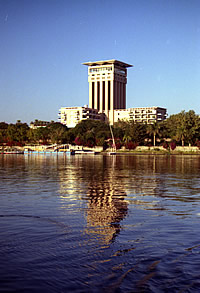
Elephantine Island lies north of the First Cataract of the Nile and 210 km south of Luxor. Here an important trading centre was located as far back as 3000 B.C. Aswan itself is thought to have been originally the market for this city and does not appear in texts until the 20th Dynasty (around 1100B.C.).1,2
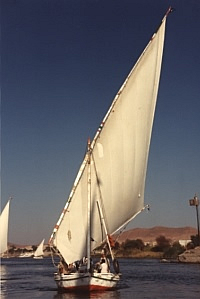
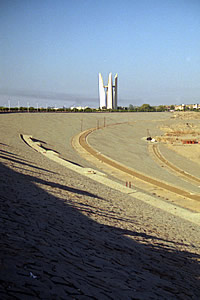
In 1989 we stayed at the Aswan Oberoi on Elephantine Island. We loved the excursions on the river in the traditional feluccas.
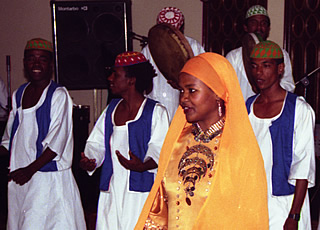
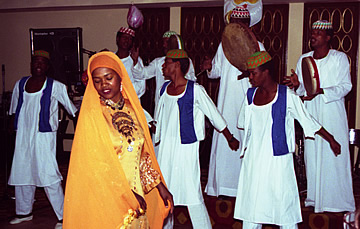
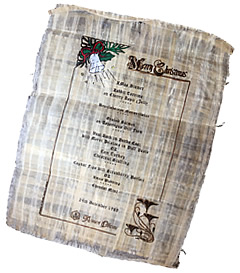
The old British Aswan Dam is 5km south of Aswan, built between 1898 and 1902. A need for more power for industrial expansion and more land for cultivation to support Egypt's burgeoning population led to the construction of the High Dam a further 6km up river in the 1960s with Soviet help.
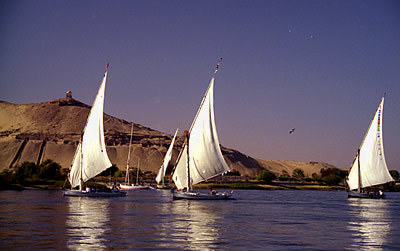
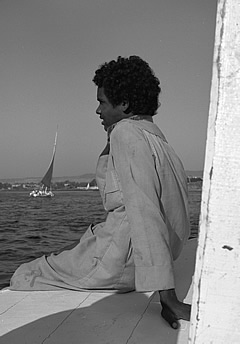
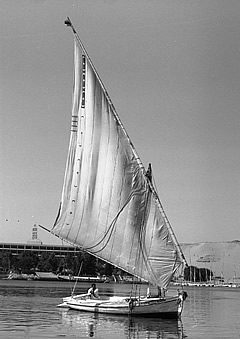
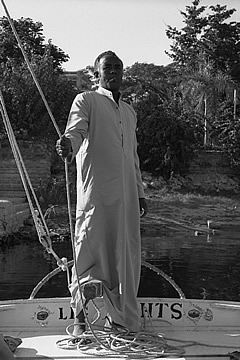
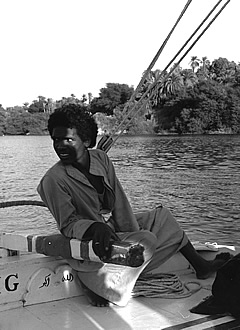
We had a wonderful majestic boatman on our felucca, helped by a young boy.
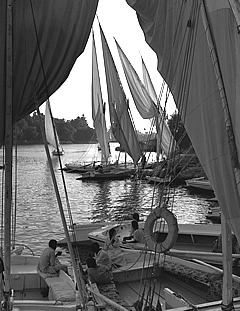
The Aga Khan's Mausoleum is a simple building which fits into the landscape beautifully with its clean lines and pink granite construction.
The Aga Khan, spiritual leader of the Ismaili Shi'ite sect, who died in 1957, spent the winters here in his white villa which is just below the mausoleum.
There is a terrific view over the Nile from here.
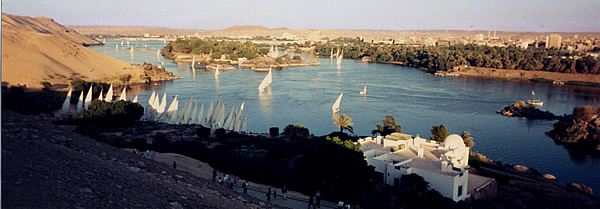
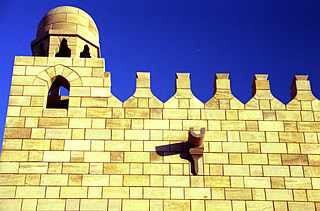
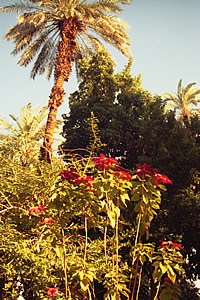
Botanical Island boasts tropical, Asian and African plants - an enjoyable change of scenery in this desert region! It is also known as Kitchener Island, as it was presented to him while he was Consul General of Egypt, and here he grew flowers brought from all over the Middle and Far East.
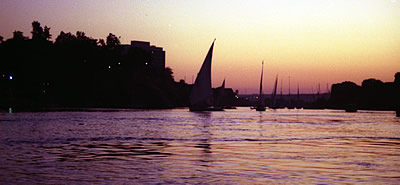
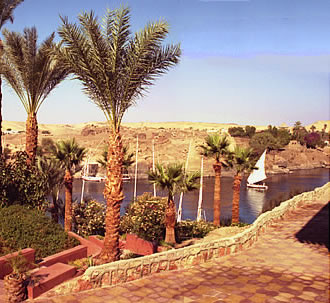
We visited the stone quarries where much of the pink and red granite came from, destined for statues, columns and obelisks in temples throughout ancient Egypt. There is an unfinished obelisk which would have weighed over a million tons if it had been completed but a flaw was discovered.
After visiting the Temple of Isis at Philae we had gin and tonics at the Old Cataract Hotel on the banks of the Nile. Dating from the time of the British it was always very opulent and many famous people have stayed here including Agatha Christie who incorporated the hotel into her book "Death on the Nile" - the film was made here too.
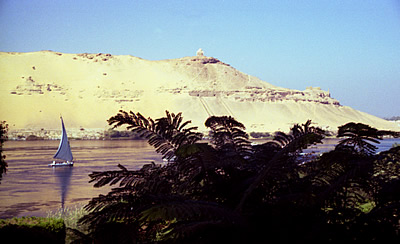
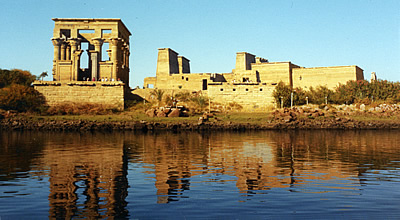
The Temple of Isis originally stood on the Island of Philae below the First Cataract at Aswan, the original dam built by the British at the end of the nineteenth century. Even then it was flooded for half the year but when the High Dam at Aswan was built, 6 km up river, the temple was almost completely submerged. When the waters partially receded it was subject to very destructive tidal-like forces.1,2
A decision was made to remove the temple, stone by stone, to the nearby island of Agilqiyyah and there re-erect it.
The temple, seen on the approach by boat, is very atmospheric.

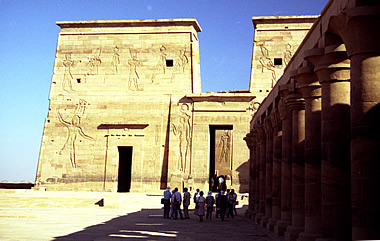
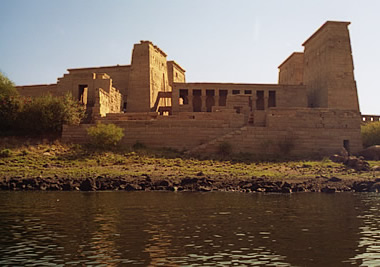
Two long colonnades line the outer temple court which leads to the First Pylon of the Temple of Isis.
The left side of the First Pylon has a very typical carving of the pharaoh, in this case Ptolemy XII, grasping a number of enemies by the hair prior to striking them with a club.
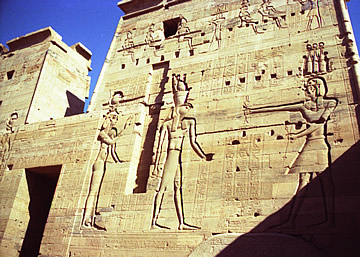
The Birth House, situated just behind the First Pylon and before the Second Pylon, is a feature of Ptolemaic temples.
Each pharaoh legitimised his dynasty by demonstrating descent from the god Horus, in a ritual association with the god's birth, celebrated in the Birth House.
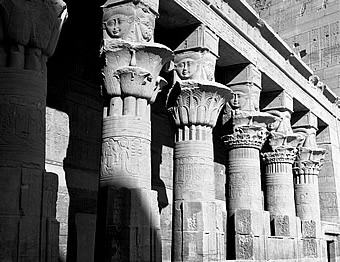
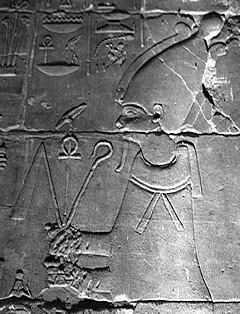
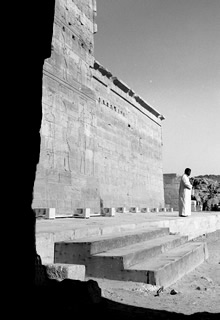
On the western edge of the island the distinctive Kiosk of Trajan stands above the Nile. Floral capitals top the columns of this small rectangular building which is otherwise rather austere as it was never finished.
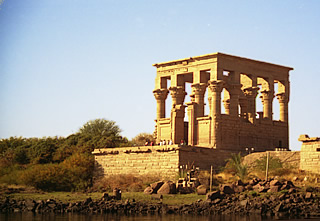
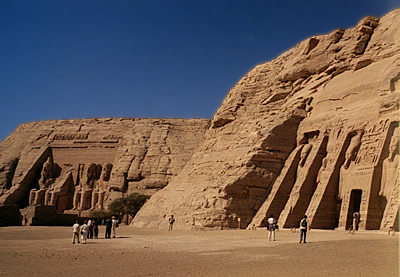
280km south of Aswan are the remarkable re-sited temples of Abu Simbel, originally built at the southern borders of Egypt by Ramses II to display the might of Egypt to travellers venturing north.
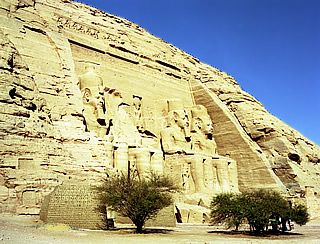
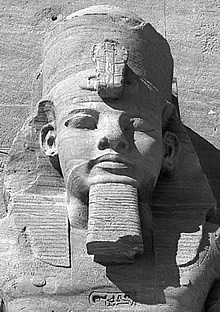
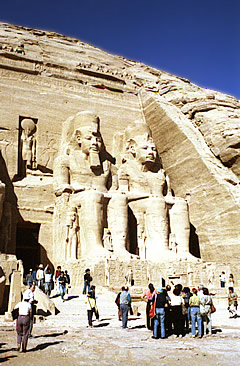
When threatened by the waters of Lake Nasser, which rose after the building of the High Dam, the ambitious decision to move the temples was made.
In an impressive feat of engineering the temples were painstakingly carved into blocks, catalogued, moved to the current site and reassembled in artificial cliffs exactly as in the originals.
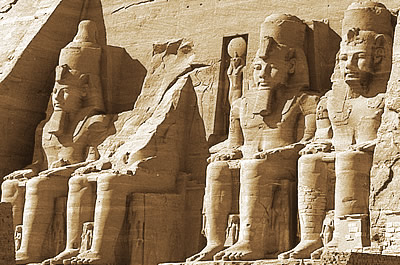
The largest temple is the Temple of Re-Herakhte, with its four enthroned colossi of Ramses II on the facade, one cracked, the pieces lying where they fell.
Each statue is 20m high and hugely impressive. In this temple Ramses identifies himself with Re-Herakhte, the falcon-headed sun god.
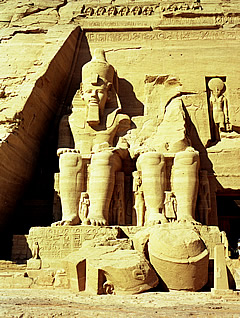
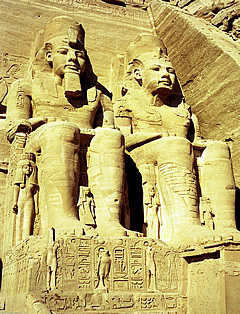
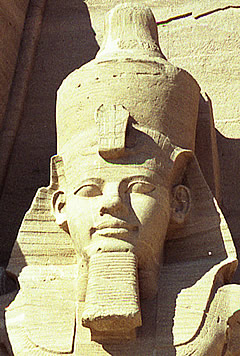
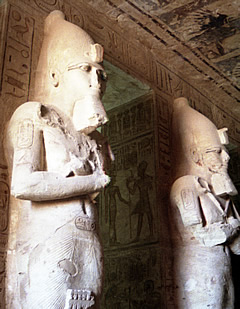
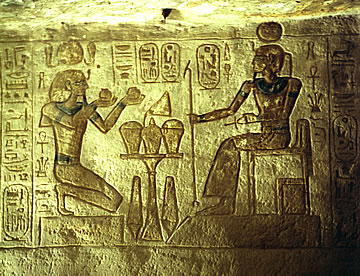
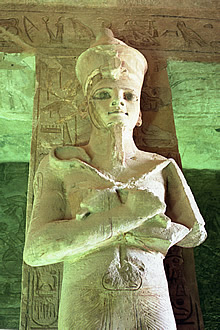
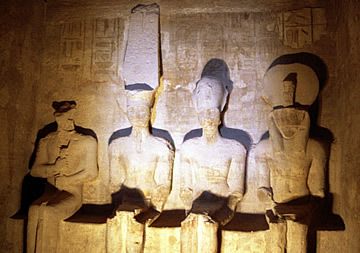
Inside is an impressive Hypostyle Hall with depictions on the walls of the Battle of Kadesh - a battle which was not as great a victory as Ramses would have liked as he failed to take the Hittite city of Kadesh.2
Lining the central aisle are 10m high Ramses figures leading to the Inner Sanctuary where four seated
deities are carved out of the rear wall: Ptah, god of Memphis, Amun,
god of Thebes, the divinised Ramses and Re-Herakhte.
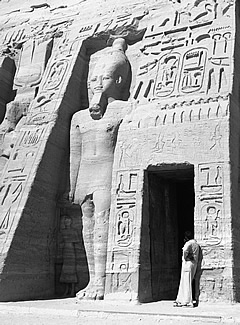
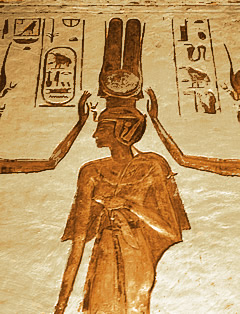
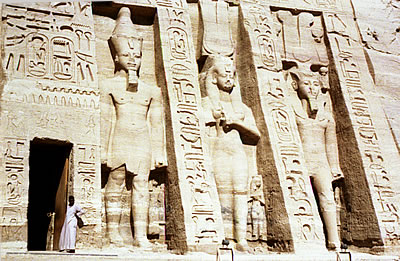
The smaller Temple of Hathor has four colossi of a striding Ramses and two of Nefertari, his favoured and much-loved wife.
Nefertari is identified with Hathor, wife to the sun god Re-Herakhte during his daily passage across the sky and mother to his rebirth.
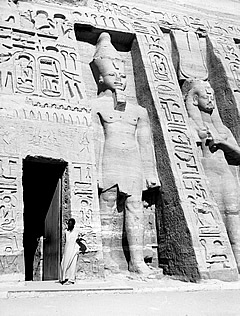
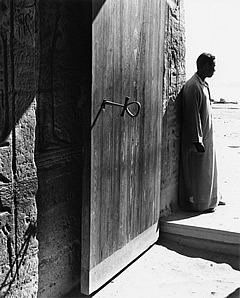
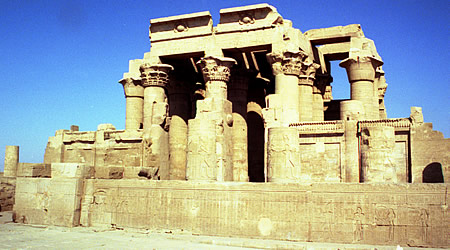
25 miles north of Aswan, facing west overlooking the Nile, this Ptolemaic/Roman temple stands on a low promontory. The northern part of the temple is dedicated to Horus and the southern to the crocodile god Sobek.
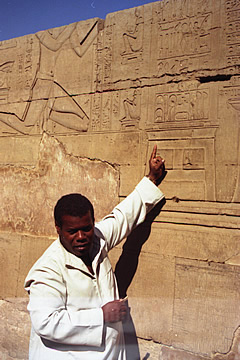
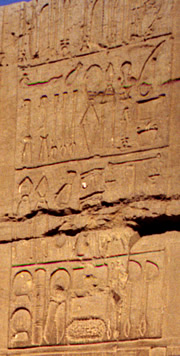
On the north section of the outer wall, in the north east corner, is a famous carving of Roman-era medical instruments.
Here the ornate capitals of the columns reflect Greek influence.
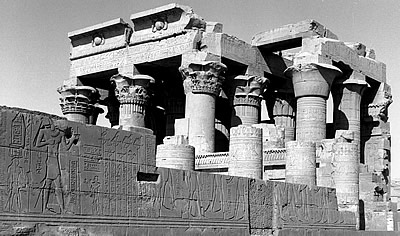
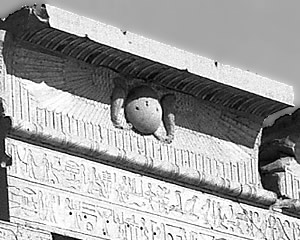
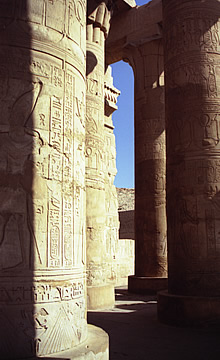
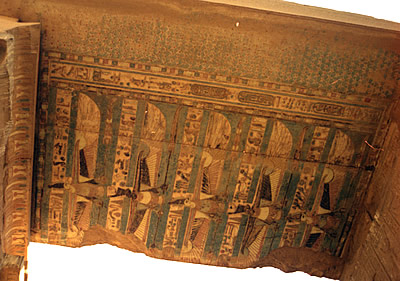
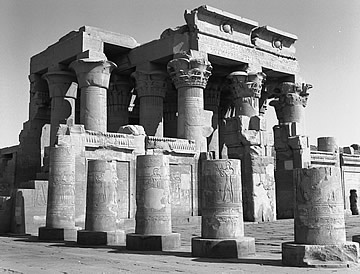
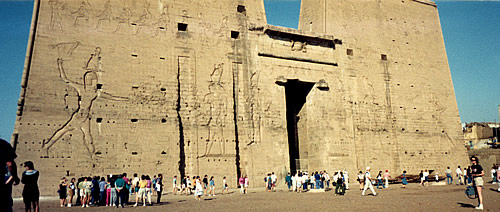
Edfu, on the west bank of the Nile, lies mid-way between Luxor and Aswan. Only Karnak is larger than this sandstone Ptolemaic temple which was finished by the mid 1st century B.C. Due to wars and changing dynasties it took almost 200 years to complete with the pylon being the final structure built when Ptolemy Auretes was pharaoh.3
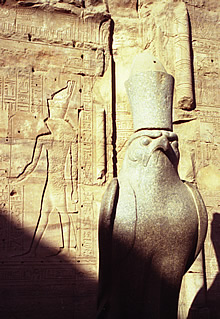
The temple is entered through the great pylon which is carved with the figures of Ptolemy Auletes striking his enemies while Horus of Edfu and Hathor of Dendera look on.
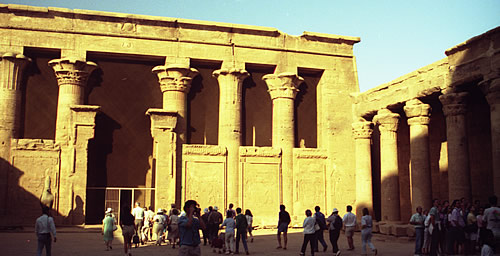

Horus, the falcon-god, is one of the most important of ancient Egyptian deities. Legend relates that he defeated rebels in many battles along the Nile while the god Re-Herakhte, the king of the gods, was in Nubia. Amongst the rebels were the god Seth and his followers who returned in the form of crocodiles and hippopotami. Horus drove them east to the borders of Egypt where he assumed the form of a winged solar disk which became the emblem of protection against evil and can be seen guarding the gateways to temples.
Through the pylon facade is a large courtyard which has beautifully carved columns on three sides.
The walls behind the colonnade are also elaborately carved and include depictions of the annual journey of Hathor to Edfu. Opposite the pylon is the entrance to the pronaos and the temple proper.
An unusual feature of the site is the enclosing wall around the rear of the temple which creates a walkway. Among the carvings on the walls look for the killing of the rebels as crocodiles and hippopotami.